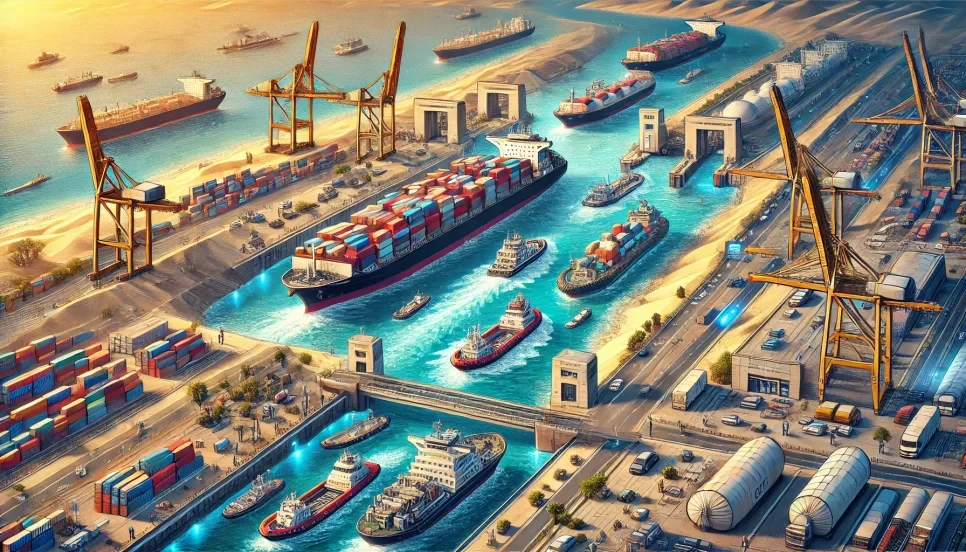The Red Sea is one of the most vital maritime routes in the world, connecting the Mediterranean Sea to the Indian Ocean through the Suez Canal. This strategic waterway facilitates global trade, serving as a major transit route for cargo ships, oil tankers, and container vessels. However, despite its importance, the shipping industry in the Red Sea faces several challenges that impact global trade and logistics.
The Importance of Shipping in the Red Sea
Strategic Trade Route: The Red Sea is a crucial link between Europe, Asia, and Africa, making it an essential passage for international commerce. Nearly 10% of global trade passes through the Suez Canal, reducing transit time and fuel costs for shipping companies.
Energy Transportation: The Red Sea plays a significant role in the global energy supply chain, with major oil and gas exports passing through this route from the Middle East to Europe and North America.
Economic Growth: Countries surrounding the Red Sea, including Egypt, Saudi Arabia, and Sudan, benefit from shipping activities, leading to job creation and economic development.
Tourism and Maritime Activities: Apart from cargo shipping, the Red Sea is also vital for tourism and fishing industries, contributing to regional economies.
Challenges Facing the Shipping Industry in the Red Sea
Piracy and Security Threats: Maritime piracy, particularly in the Gulf of Aden and Bab el Mandeb Strait, poses a significant risk to vessels navigating the region. Increased security measures and naval patrols are required to ensure safe passage.
Geopolitical Instability: Conflicts in the surrounding regions, including Yemen and the Horn of Africa, create instability that can disrupt trade routes and increase shipping costs.
Environmental Concerns: Oil spills, pollution, and coral reef destruction are major environmental risks associated with increased maritime traffic. Sustainable practices and stricter regulations are needed to protect the marine ecosystem.
Navigation Challenges: The narrow passage at Bab el Mandeb and congestion in the Suez Canal can cause delays, affecting global supply chains.
High Operational Costs: Rising fuel prices, port fees, and regulatory compliance costs add financial burdens to shipping companies operating in the region.
Future Prospects and Solutions
Enhancing Maritime Security: Governments and international coalitions must collaborate to improve security measures, including naval patrols and surveillance systems, to mitigate piracy and threats in the region.
Infrastructure Development: Expanding and modernizing ports, improving logistics hubs, and investing in digital technologies can enhance shipping efficiency and reduce bottlenecks.
Sustainability Initiatives: Implementing eco-friendly shipping solutions, such as using low-emission fuels and adopting strict environmental regulations, will help protect marine ecosystems.
Diplomatic Cooperation: Regional and international diplomatic efforts are essential to resolving geopolitical conflicts that threaten maritime trade.
Technology Integration: The adoption of AI, automation, and blockchain in shipping logistics can optimize route planning, enhance security, and reduce operational costs.
The Red Sea remains a critical artery for global trade, with immense economic and strategic importance. However, addressing the challenges of security threats, environmental concerns, and geopolitical instability is essential for maintaining the efficiency and safety of shipping operations. Governments and international organizations must work together to implement solutions that enhance maritime security, promote sustainable practices, and ensure the smooth flow of goods through this key waterway.










Add New Review (Be the first to write a review)